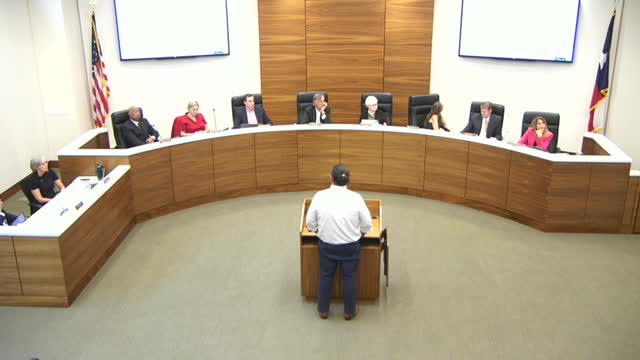Community fights to save heritage oak trees from development
September 09, 2024 | Bellaire, Harris County, Texas
This article was created by AI summarizing key points discussed. AI makes mistakes, so for full details and context, please refer to the video of the full meeting. Please report any errors so we can fix them. Report an error »

During a recent government meeting, discussions centered around a proposed development project that involves the removal of four large oak trees to accommodate a new driveway. The architectural team emphasized their commitment to minimizing root damage by strategically placing the driveways between the trees, a method previously employed in the design of the city hall's parking lot. They conducted a thorough tree survey to assess the existing trees' health and size, aiming for transparency regarding the project's environmental impact.
The city of Bel Air's landscape and tree ordinances require collaboration with the city arborist to determine which trees will be removed and how they will be replaced. The architects stressed the importance of thoughtful landscaping that aligns with tree preservation goals, rather than merely meeting numerical requirements.
Public comments revealed significant community concern regarding the potential loss of mature heritage live oak trees, which are considered vital for flood mitigation and local ecology. Residents highlighted the interconnected root systems of these trees, warning that their removal could adversely affect neighboring trees and exacerbate flooding issues in the area. One speaker urged the council to consider more environmentally friendly alternatives that would preserve the trees, emphasizing the irreplaceable nature of mature trees compared to the flexibility of building designs.
The meeting concluded with a call for further public engagement and consideration of the ecological implications of the proposed development, reflecting a community deeply invested in preserving its natural resources amidst urban development pressures.
The city of Bel Air's landscape and tree ordinances require collaboration with the city arborist to determine which trees will be removed and how they will be replaced. The architects stressed the importance of thoughtful landscaping that aligns with tree preservation goals, rather than merely meeting numerical requirements.
Public comments revealed significant community concern regarding the potential loss of mature heritage live oak trees, which are considered vital for flood mitigation and local ecology. Residents highlighted the interconnected root systems of these trees, warning that their removal could adversely affect neighboring trees and exacerbate flooding issues in the area. One speaker urged the council to consider more environmentally friendly alternatives that would preserve the trees, emphasizing the irreplaceable nature of mature trees compared to the flexibility of building designs.
The meeting concluded with a call for further public engagement and consideration of the ecological implications of the proposed development, reflecting a community deeply invested in preserving its natural resources amidst urban development pressures.
View full meeting
This article is based on a recent meeting—watch the full video and explore the complete transcript for deeper insights into the discussion.
View full meeting
